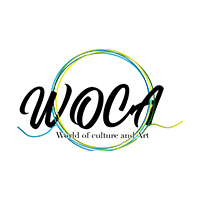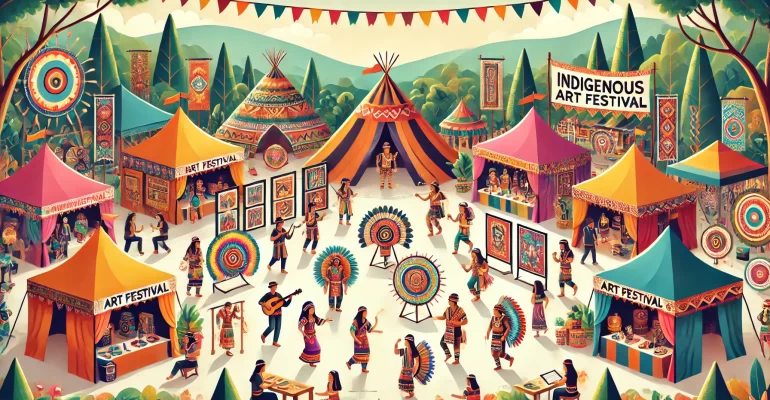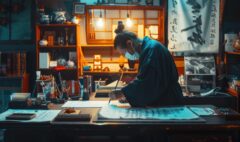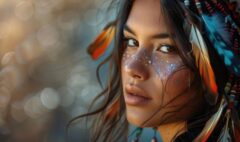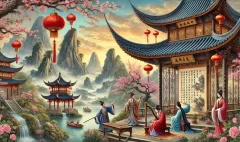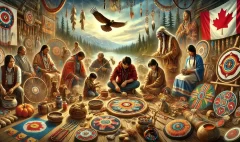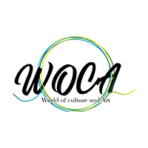All in one: Indigenous Art Exhibitions and Festivals + 15 Top Even
All in one: Indigenous Art Exhibitions and Festivals + 15 Top Even
Indigenous art exhibitions and festivals are events that celebrate and showcase the artistic achievements and cultural heritage of Indigenous peoples. These events provide platforms for Indigenous artists to display their work, share their stories, and engage with broader audiences. They often include a variety of activities such as art markets, performances, workshops, and cultural demonstrations.
History of Indigenous Art Exhibitions and Festivals
The history of Indigenous art exhibitions and festivals is rich and varied, reflecting the diverse cultures and traditions of Indigenous peoples around the world. Here are some key points in their history:

Early Recognition
- 19th Century: Indigenous art began to gain recognition in the Western world through exhibitions in museums and world fairs. However, these early exhibitions often displayed Indigenous art as ethnographic objects rather than as fine art.
- Early 20th Century: Interest in Indigenous art grew as part of a broader fascination with “primitive” art, influencing modernist movements. Artists like Emily Carr in Canada drew inspiration from Indigenous art.
Post-War Period
- Mid-20th Century: There was a shift towards recognizing the artistic value and cultural significance of Indigenous art. Exhibitions started to focus more on contemporary Indigenous artists rather than just traditional crafts.
Cultural Renaissance
- 1960s-1970s: This period saw a cultural renaissance among Indigenous communities, with a renewed emphasis on preserving and promoting traditional arts. Festivals and exhibitions became important venues for this cultural resurgence.
- Founding of Indigenous Art Organizations: Groups like the Professional Native Indian Artists Inc. in Canada, also known as the “Indian Group of Seven,” played a key role in promoting Indigenous art.
Contemporary Era
- 1980s-Present: Indigenous art festivals and exhibitions have become more prominent and professionalized. Major art institutions around the world now regularly feature Indigenous art. Festivals have expanded to include contemporary forms of expression like digital art, film, and fashion.
Why Indigenous Art Exhibitions and Festivals Are Held Today
Indigenous art exhibitions and festivals are held today to preserve and promote cultural heritage, provide economic opportunities for artists, educate and raise awareness among wider audiences, encourage artistic innovation, and strengthen community bonds. These events celebrate traditional and contemporary Indigenous art, foster cultural pride, attract tourism, support artists financially, and highlight important social issues, creating a vibrant platform for cultural exchange and collaboration.

Cultural Preservation and Promotion
- Preserving Heritage: These events help preserve traditional art forms and cultural practices that might otherwise be at risk of disappearing.
- Promoting Cultural Pride: They promote cultural pride and identity among Indigenous peoples, providing a space to celebrate and share their heritage.
Economic Opportunities
- Supporting Artists: Festivals and exhibitions provide economic opportunities for Indigenous artists by giving them a platform to sell their work and gain exposure.
- Tourism and Community Benefits: These events often attract tourists and bring economic benefits to the host communities.
Education and Awareness
- Cultural Exchange: They foster greater understanding and appreciation of Indigenous cultures among non-Indigenous audiences.
- Raising Awareness: These events raise awareness about the historical and contemporary issues faced by Indigenous communities, such as colonization, land rights, and social justice.
Artistic Innovation
- Showcasing Talent: They showcase the diversity and creativity of Indigenous artists, highlighting both traditional and contemporary works.
- Encouraging Innovation: By providing a platform for new and emerging artists, these events encourage artistic innovation and the evolution of Indigenous art forms.
Community Building
- Strengthening Communities: They strengthen community bonds by bringing people together to celebrate shared heritage and traditions.
- Networking Opportunities: These events provide networking opportunities for artists, curators, scholars, and cultural workers, fostering collaboration and support within the Indigenous art community.

Exploring the World’s Premier Indigenous Art and Cultural Festivals
Discover some of the most prestigious Indigenous Art Exhibitions and Festivals from around the world. These events celebrate the rich traditions and contemporary expressions of Indigenous artists, featuring a wide range of art forms, performances, and cultural exchanges. From the Santa Fe Indian Market in the USA to the Pacific Arts Festival in various Pacific nations, each festival provides a unique platform for showcasing the creativity and heritage of Indigenous peoples, fostering appreciation and understanding across global audiences.
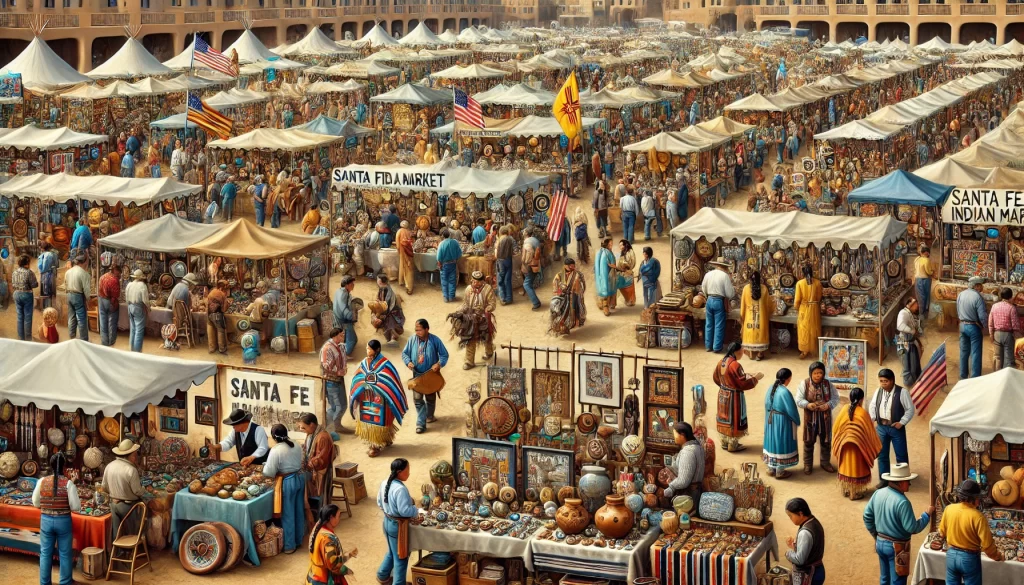
Santa Fe Indian Market (USA)
Held annually in August in Santa Fe, New Mexico, the Santa Fe Indian Market is one of the largest and most prestigious Native American art markets in the world. It features a wide array of art forms, including pottery, jewelry, textiles, and painting, showcasing the talents of Native American artists from across the United States. The market draws thousands of visitors, collectors, and art enthusiasts each year. In 2023, the event celebrated its 101st anniversary with a record number of participating artists and attendees, highlighting the enduring appeal and cultural significance of Indigenous art.
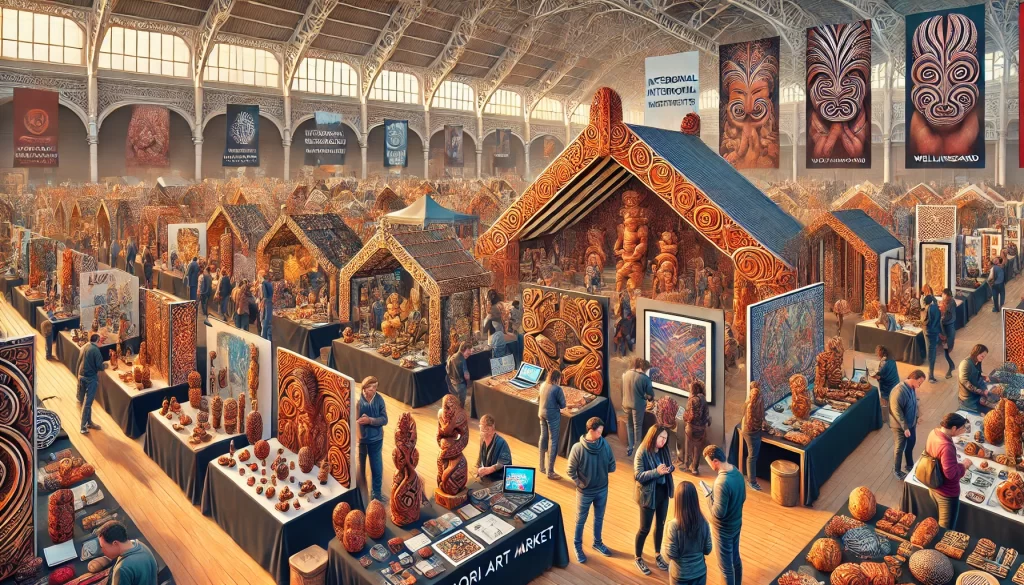
Maori Art Market (New Zealand)
The Maori Art Market is a biennial event held in Wellington, New Zealand, showcasing the best contemporary Maori art. This event features an array of art forms, including carving, weaving, painting, and digital art. It attracts artists and visitors from around the globe, celebrating Maori culture and creativity. The last Maori Art Market took place in 2022, drawing significant international attention and featuring groundbreaking digital artworks alongside traditional pieces, underscoring the dynamic evolution of Maori art.
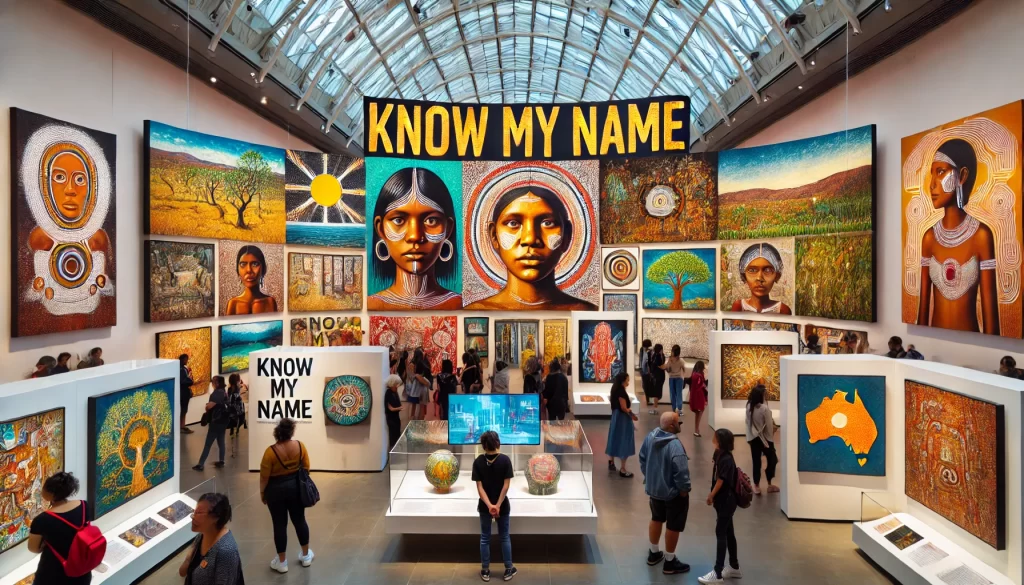
National Indigenous Art Triennial (Australia)
Hosted by the National Gallery of Australia, the National Indigenous Art Triennial is a triennial exhibition that features works by leading and emerging Indigenous Australian artists. This exhibition celebrates the diversity and dynamism of Indigenous art, offering a platform for artists to share their stories and perspectives. The latest edition, held in 2021, was titled “Know My Name,” and it focused on amplifying the voices of Indigenous women artists. The exhibition received widespread acclaim for its powerful artworks and its contribution to the ongoing dialogue about Indigenous identity and rights in Australia.
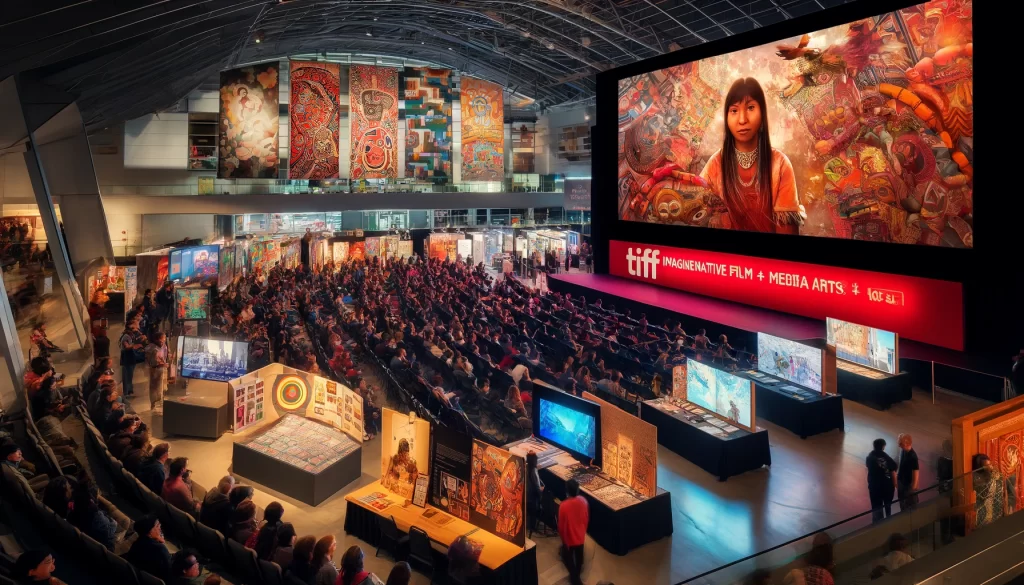
ImagineNATIVE Film + Media Arts Festival (Canada)
Based in Toronto, the ImagineNATIVE Film + Media Arts Festival is held annually in October and is the largest Indigenous film and media arts festival in the world. The festival presents innovative works by Indigenous filmmakers and media artists, offering a platform for storytelling and cultural expression. In 2023, the festival celebrated its 24th edition with a hybrid format, featuring both in-person and virtual screenings. Highlights included the premiere of several groundbreaking films and interactive digital media projects, emphasizing the festival’s role in fostering creative innovation and cultural exchange.
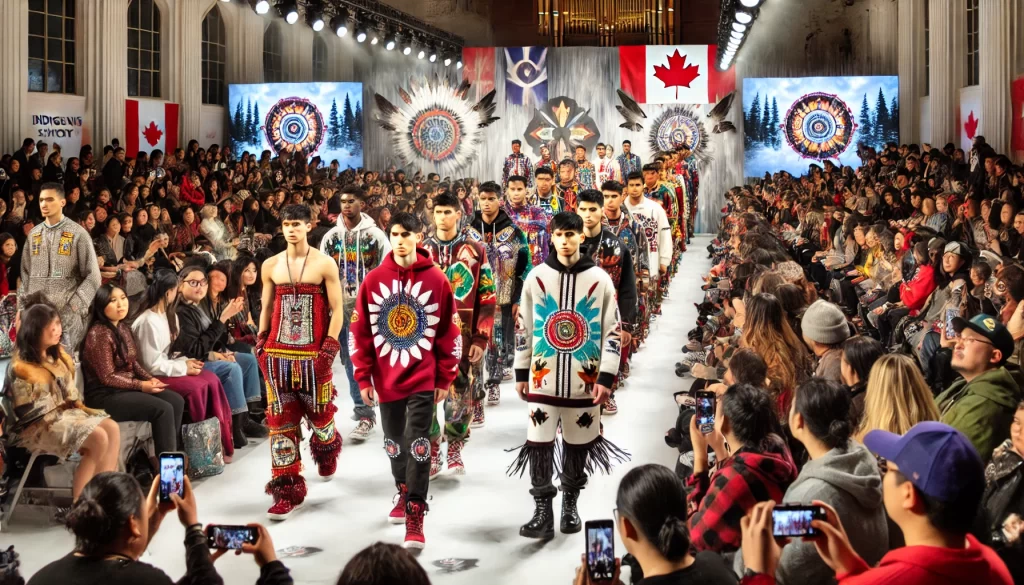
Indigenous Fashion Week Toronto (Canada)
Indigenous Fashion Week Toronto is an event held biennially in Toronto that highlights the work of Indigenous fashion designers, models, and stylists. The event showcases both traditional and contemporary Indigenous fashion, promoting cultural heritage and modern design. The most recent Indigenous Fashion Week took place in 2022, featuring a blend of runway shows, panel discussions, and workshops. The event was praised for its inclusivity and celebration of Indigenous creativity, with designers presenting collections that blended traditional craftsmanship with contemporary aesthetics, challenging stereotypes and pushing the boundaries of fashion.
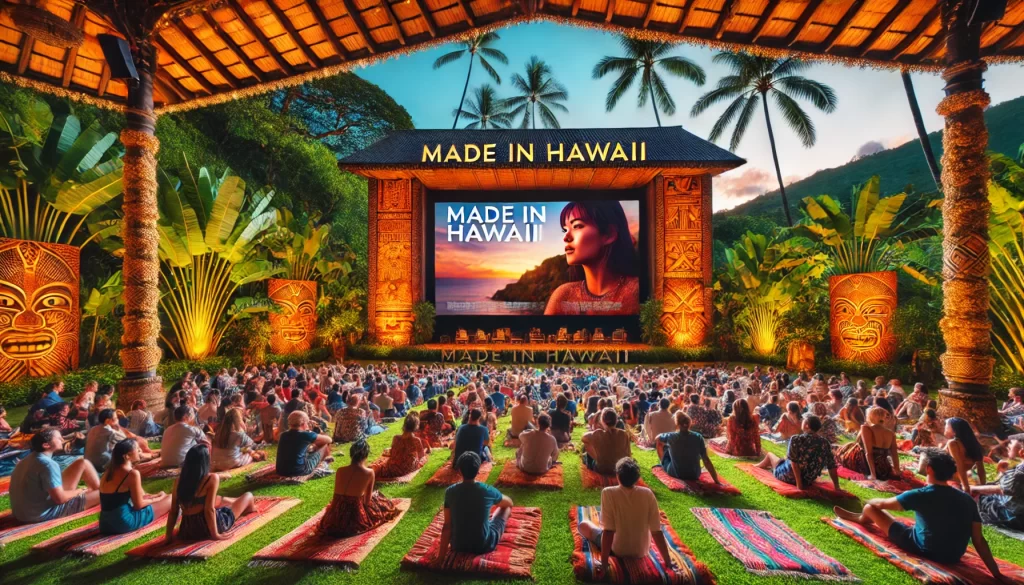
Hawaii International Film Festival – Made in Hawaii (USA)
The Hawaii International Film Festival (HIFF) features a special section called Made in Hawaii, focusing on films by Indigenous Hawaiian filmmakers. This section celebrates the stories and culture of Hawaii through a cinematic lens. Held annually in November, the festival draws attention to the rich heritage and contemporary issues of Hawaiian life. In 2023, the Made in Hawaii section highlighted several notable films, including “Kuleana” by Brian Kohne and “Stoke” by Zoe Eisenberg and Phillips Payson, which received critical acclaim for their authentic storytelling and cultural representation.
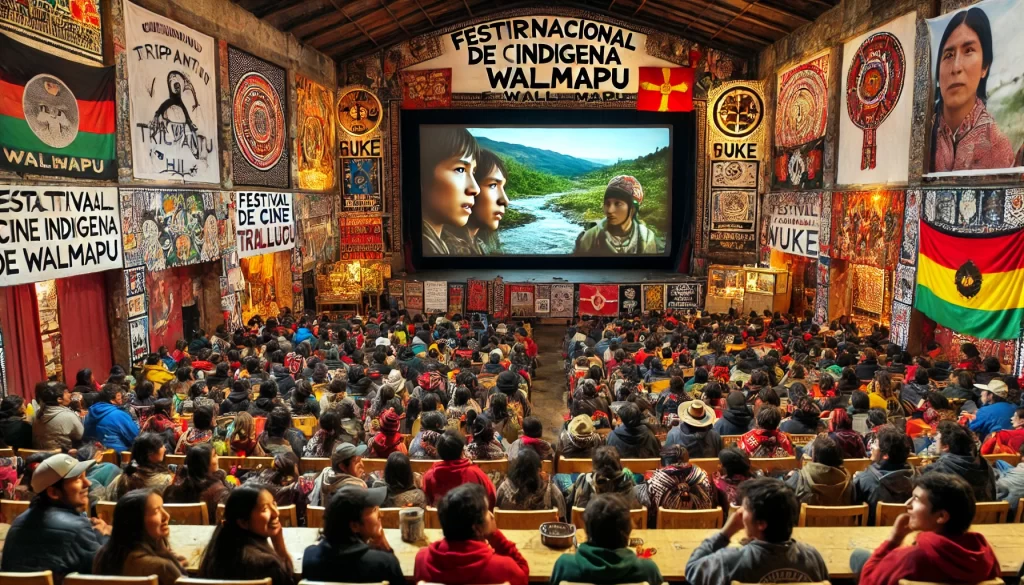
Festival Internacional de Cine Indígena de Wallmapu (Chile)
The Festival Internacional de Cine Indígena de Wallmapu takes place annually in Temuco, Chile, emphasizing the Mapuche culture and featuring films made by Indigenous filmmakers from across the Americas. Held in November, this festival aims to celebrate and preserve Indigenous narratives through cinema. In 2023, the festival featured prominent films such as “Wiñoy Tripantu” by Miguel Littin and “Ñuke” by Jeannette Paillán, which deeply resonated with audiences for their portrayal of Indigenous struggles and traditions.
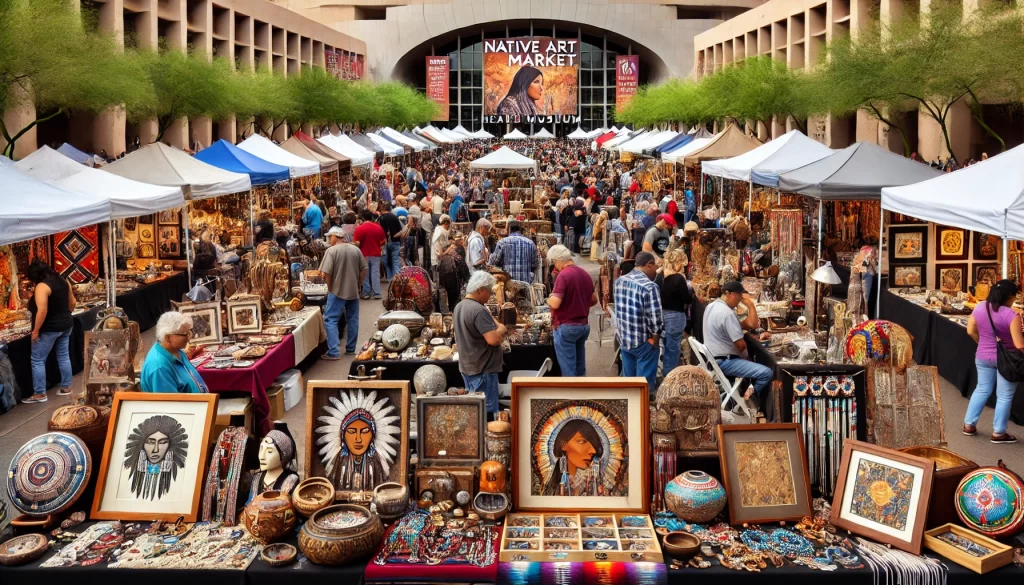
Native Art Market at the Heard Museum (USA)
The Native Art Market at the Heard Museum in Phoenix, Arizona, is an annual event held in March. It features art from Native American artists, including jewelry, pottery, textiles, and sculpture. The market is a premier venue for Native artists to showcase their work and connect with collectors. In 2023, the event was highlighted by the participation of renowned artists such as jeweler Keri Ataumbi and potter Jody Naranjo, who presented their latest collections to enthusiastic crowds.
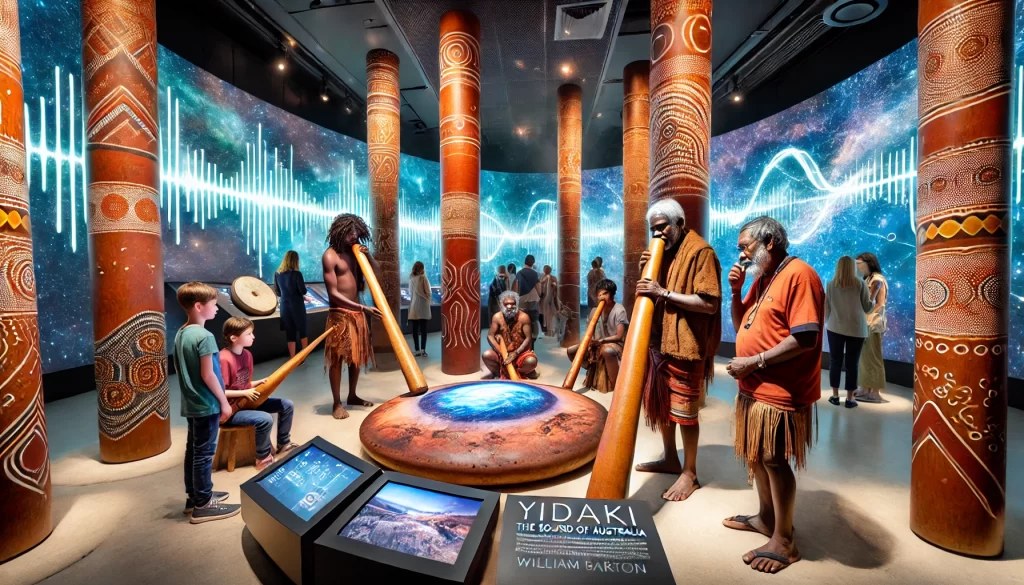
Yidaki: Didjeridu and the Sound of Australia (Australia)
The “Yidaki: Didjeridu and the Sound of Australia” exhibition is held at the South Australian Museum and explores the cultural significance and contemporary use of the didjeridu by Indigenous Australian peoples. Typically held throughout the year, this exhibition provides an immersive experience into the history and modern relevance of the didjeridu. In its 2023 edition, the exhibition featured renowned didjeridu players like William Barton and Djalu Gurruwiwi, who shared their expertise and performances, captivating audiences with their profound connection to this iconic instrument.
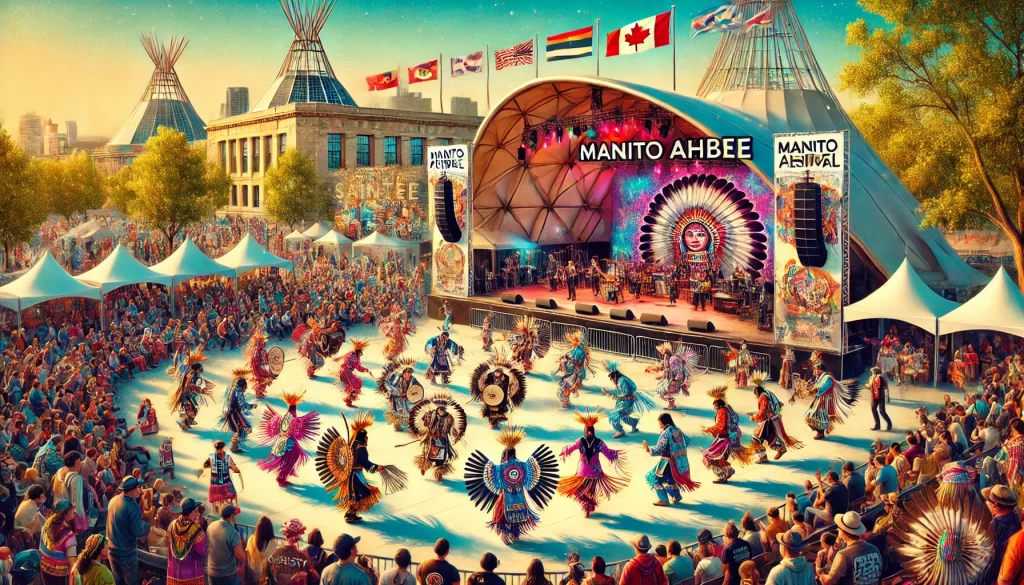
Manito Ahbee Festival (Canada)
The Manito Ahbee Festival is an annual event held in May in Winnipeg, Manitoba, celebrating Indigenous arts, culture, and music. The festival includes a powwow, music awards, and an Indigenous marketplace, drawing participants from across North America. In 2023, the festival featured performances by acclaimed musicians such as Buffy Sainte-Marie and Jeremy Dutcher, as well as a stunning array of traditional and contemporary art from artists like painter Christi Belcourt and beadwork artist Nico Williams. The event highlighted the vibrant cultural contributions of Indigenous peoples and fostered a spirit of unity and celebration.
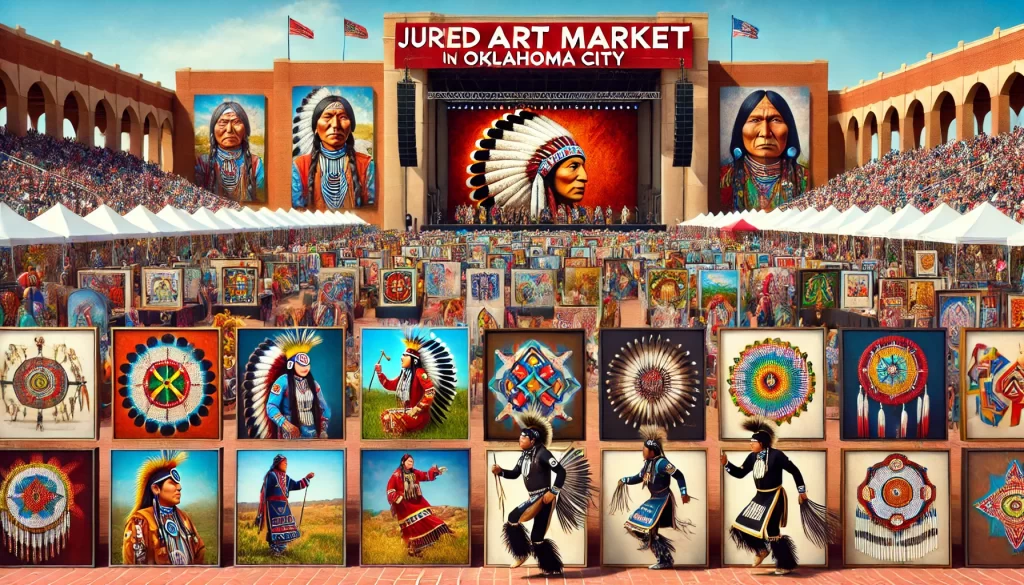
Red Earth Festival (USA)
The Red Earth Festival is an annual event held in June in Oklahoma City, celebrating the rich traditions of Native American tribes through a juried art market, dance competitions, and cultural demonstrations. In 2023, the festival celebrated its 37th year with a vibrant showcase of Indigenous culture. Notable artists such as painter Benjamin Harjo Jr. and beadwork artist Kenneth Johnson participated, bringing their exceptional talents to the forefront. The event also featured stunning dance performances that captivated audiences, highlighting the enduring vitality of Native American cultural practices.
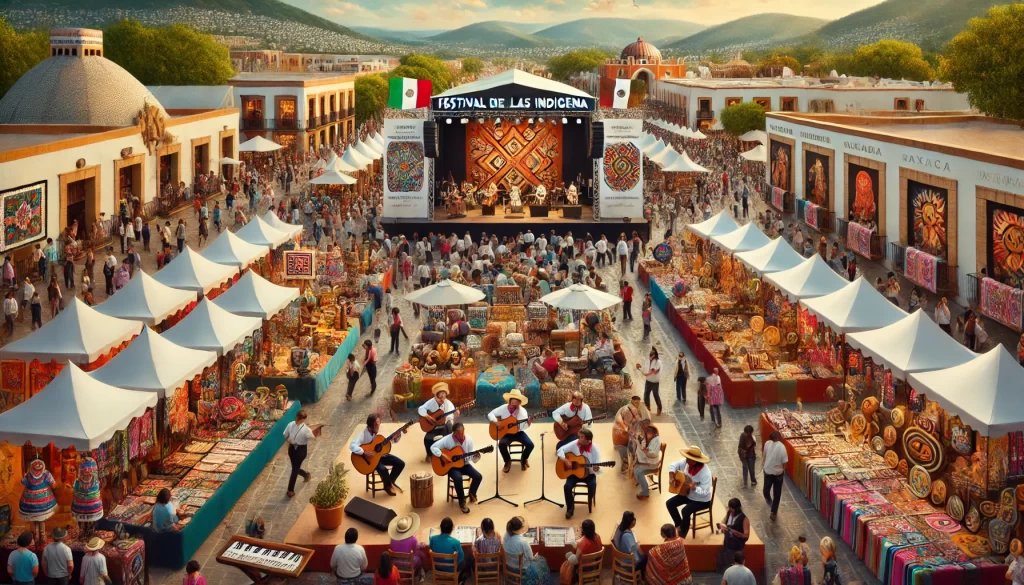
Festival de las Artes Indígenas (Mexico)
The Festival de las Artes Indígenas takes place annually in October in Oaxaca, Mexico. This festival showcases the diverse arts of Indigenous peoples from across Mexico, including crafts, music, dance, and visual arts. In 2023, the festival drew significant attention with performances by renowned musicians like Lila Downs and visual exhibits from artists such as Francisco Toledo. The event provided a vibrant platform for Indigenous artists to share their work and cultural heritage, attracting visitors from around the world to celebrate the richness of Mexican Indigenous arts.
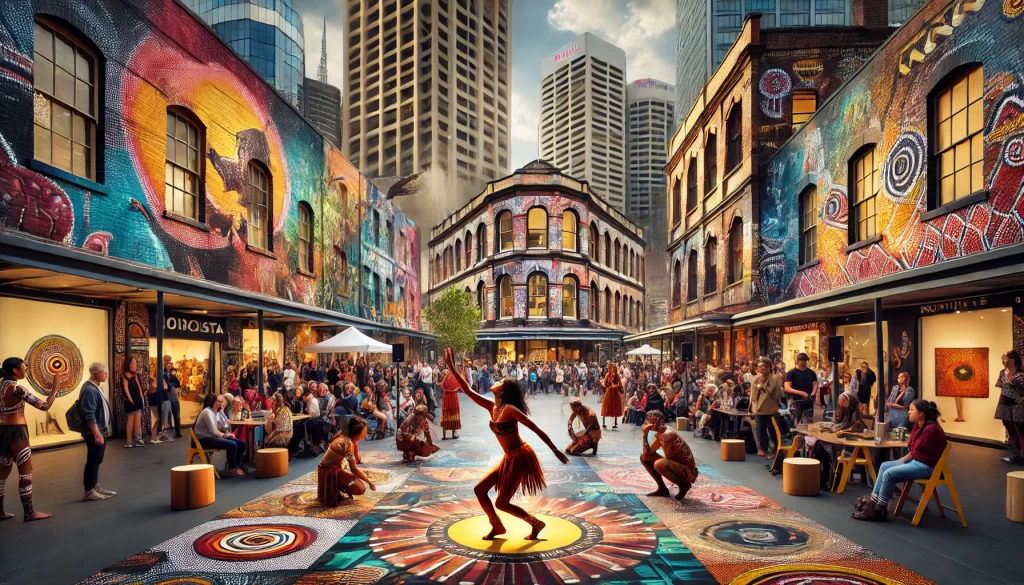
Parramatta Lanes Indigenous Art Festival (Australia)
Part of the larger Parramatta Lanes Festival held in October in Sydney, the Parramatta Lanes Indigenous Art Festival highlights contemporary Indigenous art and performances in an urban setting. In its 2023 edition, the festival featured the works of celebrated artist Reko Rennie and performances by Indigenous dancer and choreographer Amrita Hepi. The event transformed the urban landscape with vibrant art installations and engaging performances, drawing crowds and fostering a deeper appreciation for contemporary Indigenous culture within the city.
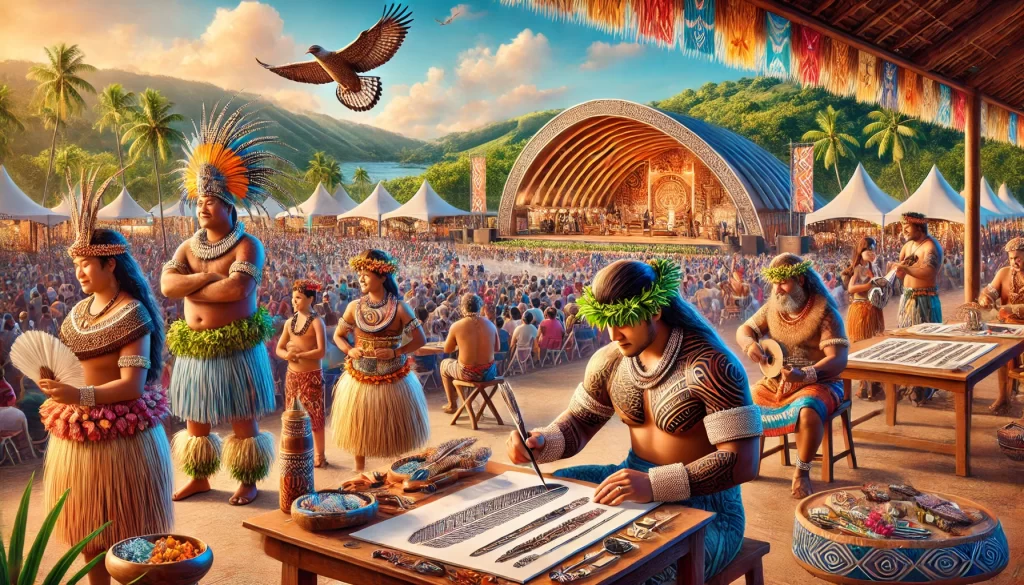
Pacific Arts Festival (Various Pacific Nations)
The Pacific Arts Festival is a traveling festival hosted by different Pacific nations every four years, showcasing the art, culture, and traditions of Indigenous peoples from the Pacific region. The 2024 festival was hosted by Hawaii, featuring a wide array of cultural presentations. The event highlighted the work of renowned artists like Samoan tattoo artist Su’a Sulu’ape Paulo II and Hawaiian featherwork artist Mele Kahalepuna Chun. The festival serves as a vital platform for cultural exchange and the preservation of Pacific Islander traditions.
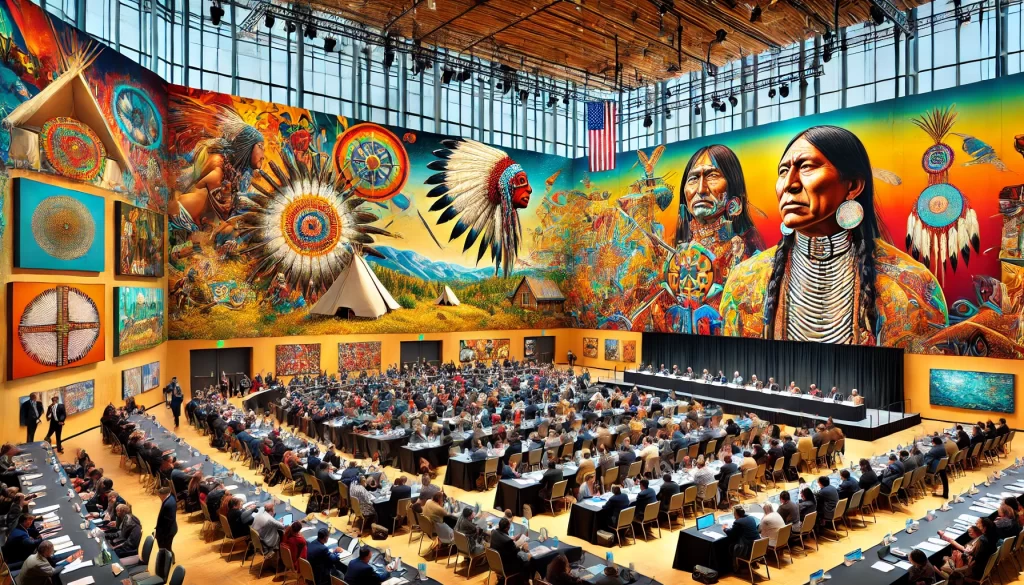
Native American Art Studies Association Biennial Conference (USA)
The Native American Art Studies Association (NAASA) Biennial Conference is held every two years, bringing together scholars, artists, and enthusiasts to explore contemporary and historical Native American art. The 2023 conference took place in Denver, Colorado, featuring exhibitions and discussions on a wide range of topics. Notable artists like installation artist Jeffrey Gibson and painter Jaune Quick-to-See Smith presented their works and engaged in panels, contributing to the rich dialogue and learning experiences at the conference. The event highlighted the dynamic and evolving nature of Native American art and its significant cultural impact.
Conclusion
Indigenous Art Exhibitions and Festivals play a crucial role in celebrating and preserving the diverse cultural heritage of Indigenous peoples worldwide. These events not only provide a platform for artists to showcase their work and share their stories but also foster greater understanding and appreciation among global audiences. By highlighting traditional and contemporary art forms, supporting economic opportunities, and encouraging artistic innovation, these festivals ensure that Indigenous cultures continue to thrive and inspire future generations. As we continue to explore and participate in these vibrant celebrations, we contribute to the ongoing dialogue about cultural identity, resilience, and the power of art to connect us all.
